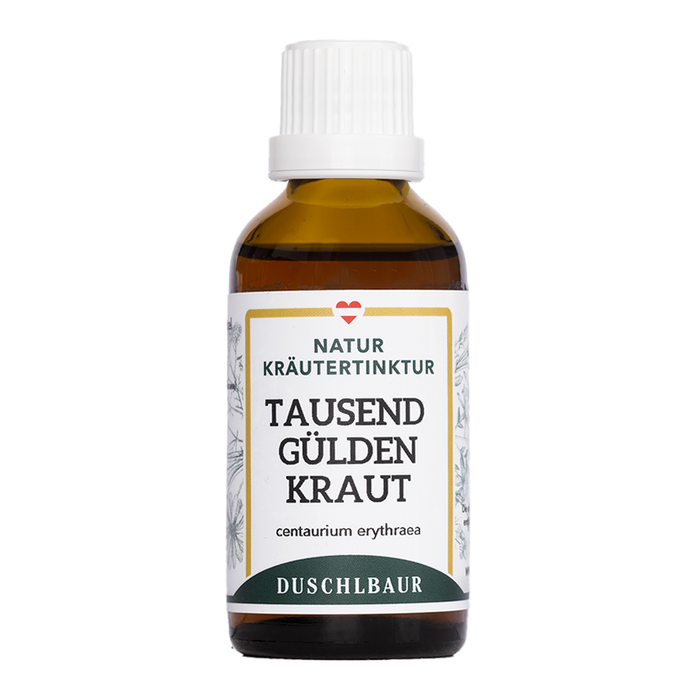The natural ingredients of theCentaury tincture dropsare: water, alcohol, centaury.
To produce these very valuable drops we use the herb with the flower.
Centaury is on the red list of endangered plants, is therefore protected and may not be collected in the wild.
The Latin name "Centaurium" is based on "centum" = one hundred – hence the original name "centaury." As its importance grew, the common people upgraded the name to "centaury." "Aurum" means "gold" in Latin. "Erythraea" comes from the Latin "erythraeus" = reddish, and is a reference to the pinkish-red flowers of the centaury.
Centaury is a member of the gentian family (Gentianaceae). Synonyms for centaury include laurel, feverfew, bitter herb, and red laurel.
The annual to biennial herbaceous plant has shallow roots and widely branched leaves. Centaury reaches a height of up to 50 cm. Its stems are thin, hairless, and square. Rosette leaves grow at the base of the plant, are darker in color, and larger than the leaves sprouting from the stem.
During the flowering period from June to early October, the typical light pink to purple flowers appear, arranged in an umbel. The characteristic yellow pistils shine impressively from the center of the flower. In the dark, the flowers are almost closed; in sunshine and at least 20 degrees Celsius, they open to flowers up to 1.5 cm in diameter with five sepals.
The flowers of the centaury produce small capsule fruits filled with numerous seeds.







